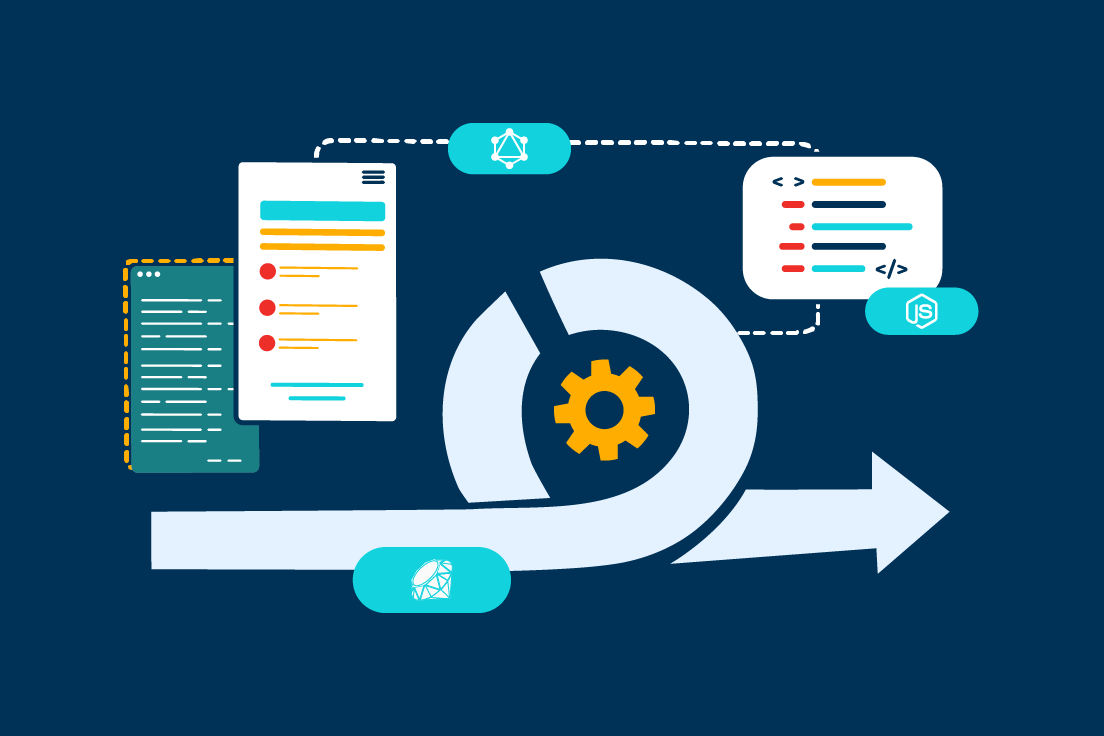
A Beginner’s Guide to Agile Project Delivery
Agile project delivery is an iterative method to software delivery in which teams build software in short development cycles, right from the start, with multiple iterations, constant improvements and with flexibility for alterations that occur as the project progresses.
Enhancements or changes are made in response to end-user feedback and product testing, with fine-tuning aiding in overall success and satisfaction.
This is the alternative to the traditional project delivery approach, where software teams ship the entire project only once it is completed. Which, by then, there is a chance that expectations have changed, and the feedback might mean costly changes are needed after project delivery.
For many businesses, the agile project delivery helps to improve the quality of finished projects. Read our guide to find out why more companies are adopting agile than ever before and how you might benefit from doing the same.
What does Agile Project Delivery mean?
Agile is one of the most impactful and pivotal approaches brought to the software engineering profession in recent years, supporting software teams in creating customer-centric products in an efficient manner.
Agile development involves using iterative, incremental, and lean approaches to streamline and accelerate project delivery. It is founded on the Agile Manifesto, which place an emphasis on individuals and interactions, working software, customer collaboration, and adapting to change.
Agile Project Delivery promises to add value to organisations because it includes controls that ensure the product is driven by the business, lowering the risk of developing the incorrect product.
Why do companies want to adopt agile project delivery?
There is universal demand for faster software development, and Agile delivery meets both customer and business needs.
There is a saying in the IT industry that 80% of end users typically use just 20% of a software application’s functions.
Agile addresses this by focusing on developing the minimum viable product (MVP) by delivering the bare minimum of features that will provide users with perceived value. The MVP also enables them to integrate feedback into each subsequent iteration as more data about the product becomes available, as well as to add to the minimum features needed (by the users).
A significant number of businesses are already using Agile Project Delivery to satisfy market needs. Even though Agile projects are 28% more effective than traditional projects, they still have a degree of risk that can be mitigated by putting in place the right controls to help realise business value, reduce the risk of building the wrong product, and increase overall development success.
Agile delivery practises can help organisations gain a competitive advantage in a rapidly changing market. Companies that enable teams to use Agile development practises satisfy discerning customers and adapt to new technologies, allowing them to develop products that set industry standards.
Agile delivery benefits more than just businesses. Customers have more meaningful interactions with organisations when their demands are addressed and their input is used to improve product development. Customers appreciate it when their suggestions and expectations are used to shape a company’s future releases.
In this guide, we explore how to create the best value for your organisation by building the right capabilities, unleashing your potential and gaining confidence to deliver the best product to market, while minimising risks and implementing controls early and often.

Agile greatly simplifies a traditional project’s typical long cycle into one to four weeks iterations containing small, user-ready segments of the final product that were developed and tested during the iteration.
While both have risk, the main result is that Agile Project Delivery has a working product after each iteration. Because of the continuous feedback that is incorporated at various points throughout the lifecycle, this product improves throughout the release.
The benefits and challenges of Agile Project Delivery
The ability to realign project work and the accelerated release of incremental functionality are two of Agile Project Delivery’s biggest strengths.
For a company that is just starting out with Agile Project Delivery, the approach may appear to introduce chaos rather than structure. Agile, by definition, is ‘non-prescriptive,’ and its application is only as good as how an organisation understands and enforces it. Organisational capabilities are multifaceted and manifested in the group’s values and norms, management systems, skills and knowledge, and techniques and tools. When first adopting Agile Project Delivery, expect changes in all of these dimensions.
Agile also entails incorporating the following characteristics into the approach:
- Self-organised, collaborative and empowered teams
- Reduction in waste due to more automation
- Continuous code quality checks
- Complete visibility on progress
The following events may occur if these core characteristics are not present:
- Poor cultural acceptance
- Insufficient project organisation and governance
- Incorrect use of the Agile techniques and tools
- No efficient risk and control tracking mechanisms
- Inadequate level of change management necessary for a successful Agile transition
Management and governance for agile project delivery:
There is a link between project risk and delivery speed. The faster a team develops a product, the greater the inherent risk. Agile necessitates a highly disciplined and focused management and governance approach that provides near real-time risk assurance via a variety of Agile ceremonies, such as:
- Release Planning – Looks at planning the corresponding set of product features to release with multiple iterations
- Iteration Planning – Team must commit to a goal and identify needs when starting each iteration
- Daily stand-ups – 15-minute stand-up meeting takes place each day of an iteration, so the development team can discuss what was done the day before, what they will do next, any bottlenecks, and so on.
- Reviews – Another meeting at the end of each iteration takes place which includes a demo to stakeholders and customers so they can preview and have their chance to share feedback
- Retrospectives – This meeting is at the end of each iteration to discuss what went well, what could have been done better, and how to bring the changes to the next iteration.
- Product Backlog Refinement (Also called grooming) – This is a chance for the product owner and team to prioritise backlog items and adjust strategy, which takes place near the end of a sprint.
Why should your company adopt agile project delivery?
Here are some of the reasons we have gathered for why companies should adopt agile project delivery:
- Prioritises customer satisfaction by delivering valuable products and functional software on time and on schedule.
- A shorter time-to-market allows for timelier customer feedback and higher customer satisfaction.
- Encourages continuous focus on technical excellence and good design, resulting in less waste.
- Because testing is integrated throughout the lifecycle, teams can identify quality issues early on.
- Reduces project delivery risk by conducting frequent reviews of product readiness with a cross-functional line of sight, encouraging high stakeholder visibility.
- Promotes the value of a self-organising, collaborative team that makes improvements, analyses problems, and adapts behaviour to become more effective along the way.
- Accepts changing requirements, encouraging quick and flexible responses to change.
- Promotes clear expectations for each cycle and a shared understanding of what constitutes done and ready for delivery across all teams.
- Having an agile mind set entails viewing setbacks as opportunities for learning, embracing iteration, collaboration, and change, and focusing on delivering value.
Is Your Company Ready to Adopt Agile Project Delivery?
Agile transformations are difficult. Designing, adopting, and implementing an Agile transformation successfully necessitates extensive planning, review, and organisational readiness.
Navigating the path to Agile success requires diligence, insight, and an understanding of Agile delivery frameworks.
We have the knowledge and experience to support your business thrive on its journey. Your organisation will enjoy the benefits of stakeholder satisfaction and a project modelled around continuous improvement and organisational growth and evolution if you use the right Agile processes, tools, principles, mindset, with the willingness to innovate.
To speak to a specialist member of our team, please fill in the contact form on our website.
Subscribe To Our Newsletter
Join our subscribers to Weekly Newsletters. Every week, you'll get 1 actionable tip on agility, business transformations and software delivery for your organisation today.
You may also like
Digital Dom – A Game Changer
Digital Dom is one of the Game Changers in the UK’s IT Industry according to Clutch There are a lot of factors that you need to consider when choosing the best new IT integration ...
How to Build a Roadmap
Building a Digital Strategy Roadmap This guide will help you create and develop your own digital strategy roadmap. It includes tips, recommendations, and best practices from leading digital commerce agencies. 01 Setting goals Business goals are ...

